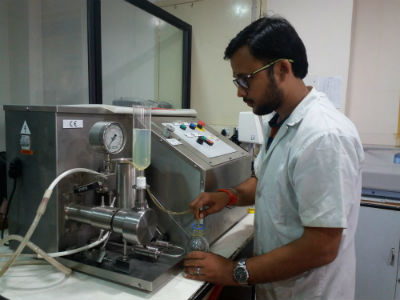|
NOVIDADES
The research focused on formulating the bio-based nanopesticide which can efficiently control the vector mosquito population, simultaneously exhibiting an environmentally benign property. The rising jeopardy of vector-borne diseases and the residual eco-pollution in current scenario due to excessive application of conventional pesticidal compounds makes the application of nanotechnological techniques.  Mosquito repellant Credit: Shenandoah University
The nanoemulsion depicted its temporal stability for a duration of 4 days in the external conditions which enhances its mosquitocidal property. Persuasive ovicidal and larvicidal property against the C. tritaeniorhynchus and A. aegypti mosquito vectors was exhibited by the neem laced urea nanoemulsion. Further, this result was substantiated via histopathological examination of the nanoemulsion treated larvae. Additionally, the consequence of the NUNE on the larval biochemistry was evaluated and nanometric pesticide was found to be efficient in comparison to bulk compound i.e. neem oil.  The formulated neem urea nanoemulsion (NUNE). Credit: Shenandoah University
The formulated pesticide i.e. neem urea nanoemulsion exhibited its potent activity as an ovicidal and larvicidal agent towards the control of dreadful mosquito vectors i.e. Aedes aegypti and Culex tritaeniorhynchus, which causes dengue and Japanese encephalitis disease. As it is well known that in present scenario India and around the world are combating with these two dreadful vector-borne diseases like dengue and Japanese encephalitis.  Formulation strategy for NUNE formulation using microfluidization process. Credit: Shenandoah University
The formulated pesticide, not only have potential to control the vector population, also provides an efficient fertility to the soil ecosystem, as the commenced research proved its bio-safe property against the beneficial bacterial isolate from paddy rhizome and paddy plant.  Research Team of Nanoemulsion and Nanomedicine lab, Centre for Nanobiotechnology, VIT-Vellore, Tamil Nadu, India. Credit: Shenandoah University
These findings are described in the article entitled Environmentally benign nanometric neem-laced urea emulsion for controlling mosquito population in environment, published in the journal Environmental Science and Pollution Research. This work was led by Prabhakar Mishra, Amitava Mukherjee & Natarajan Chandrasekaran from VIT University. Sciencetrends. Posted: Feb 09, 2018. Assuntos Conexos: |
|||||||||||||||||||||||||